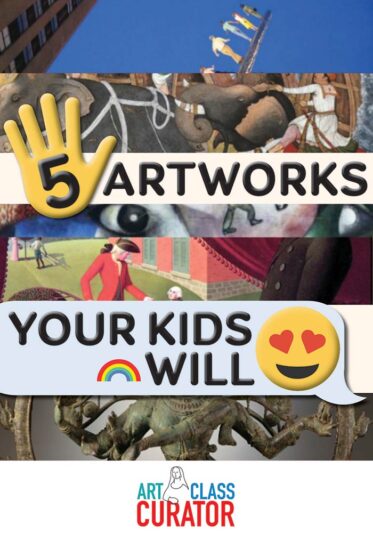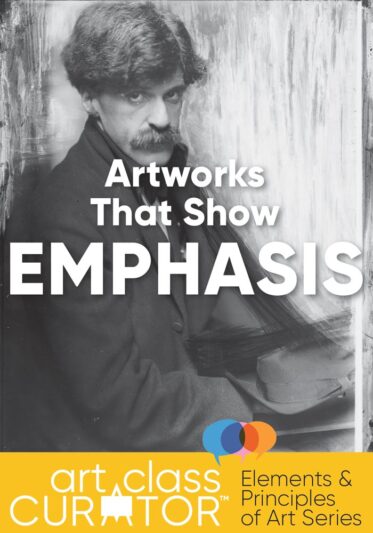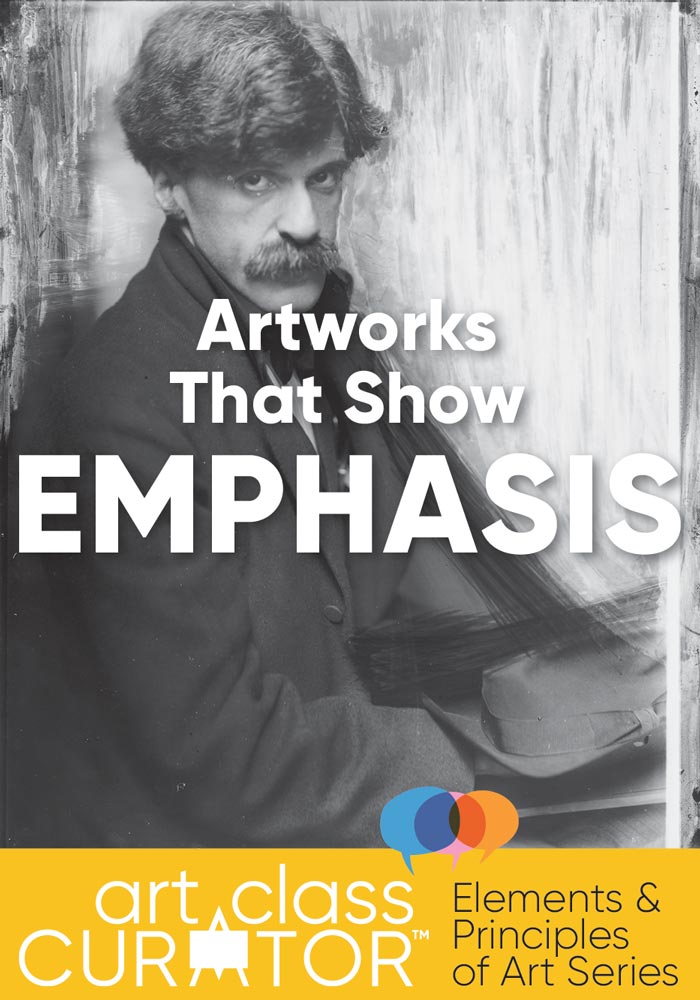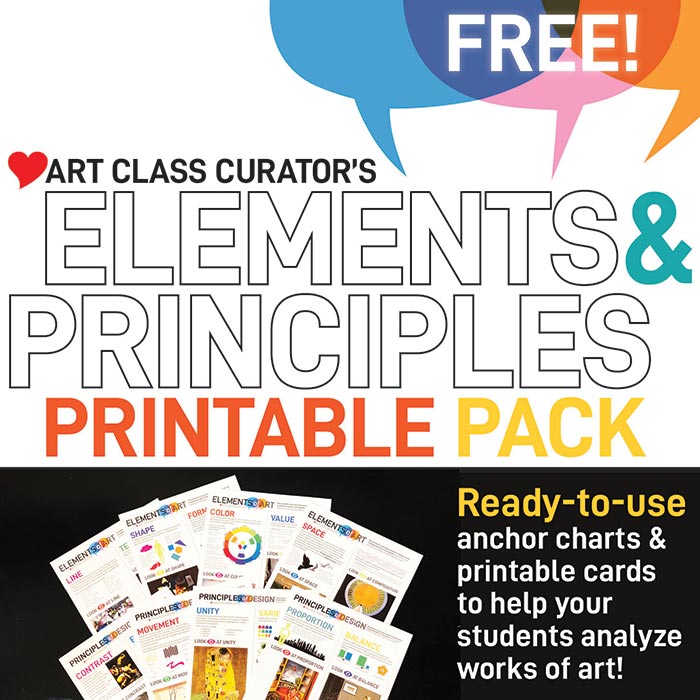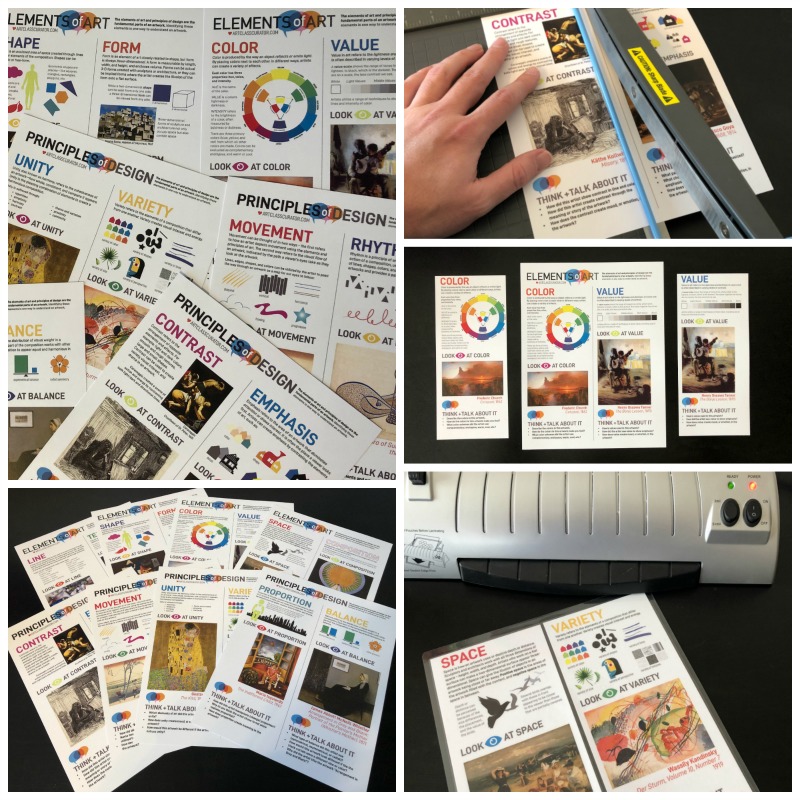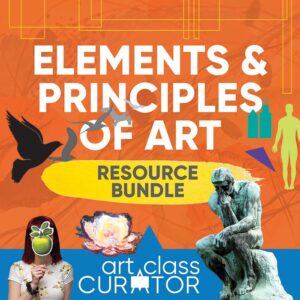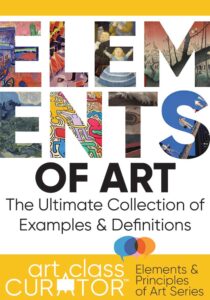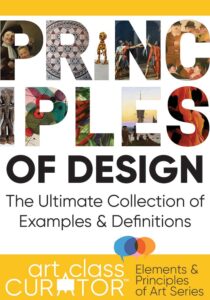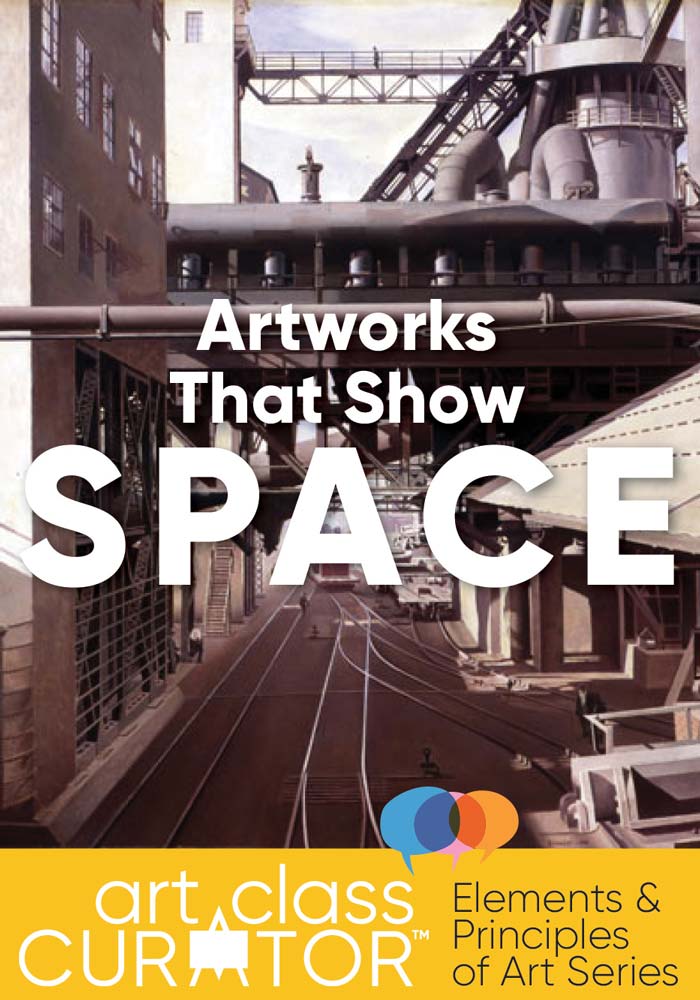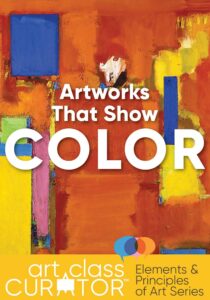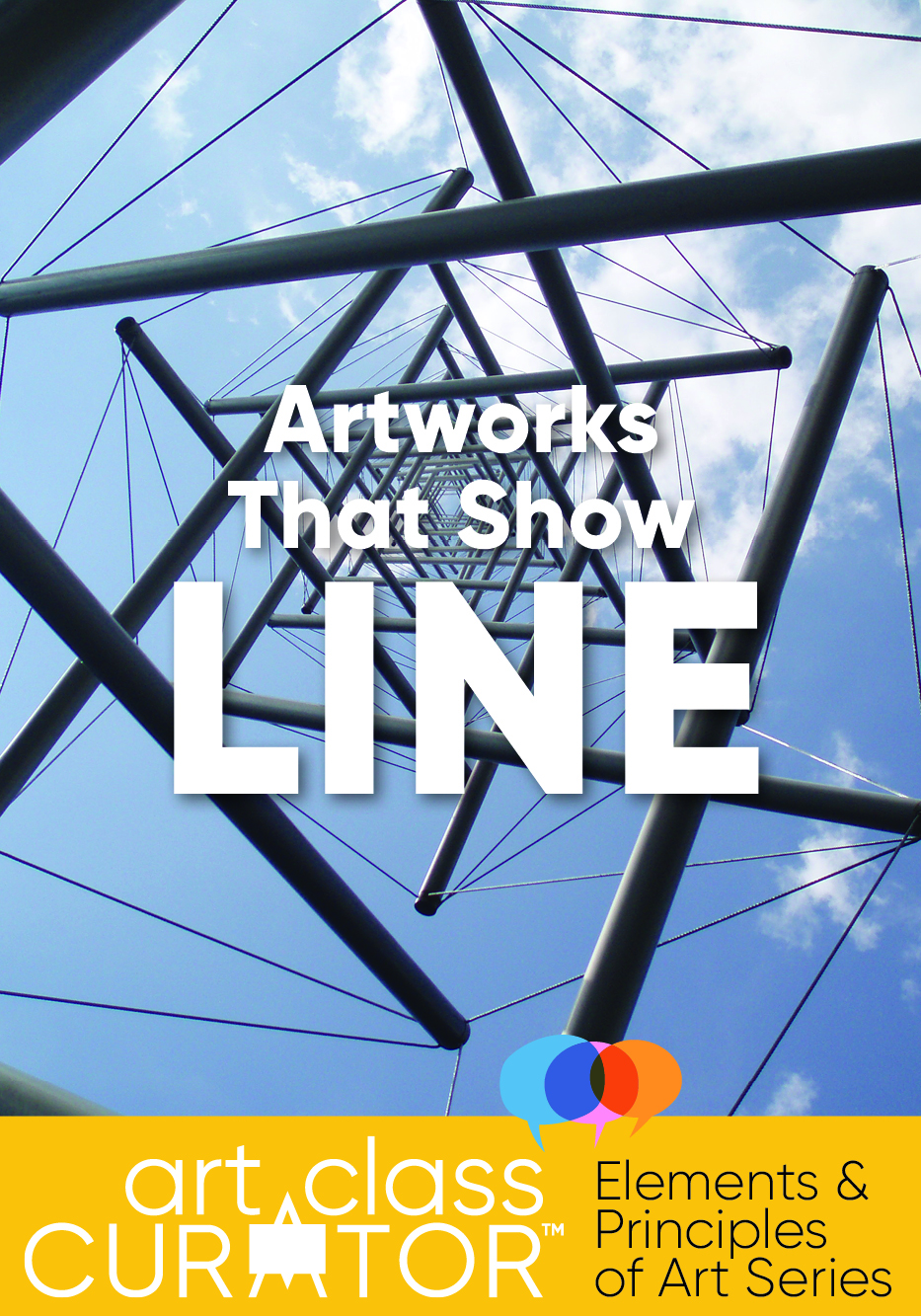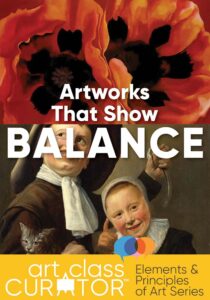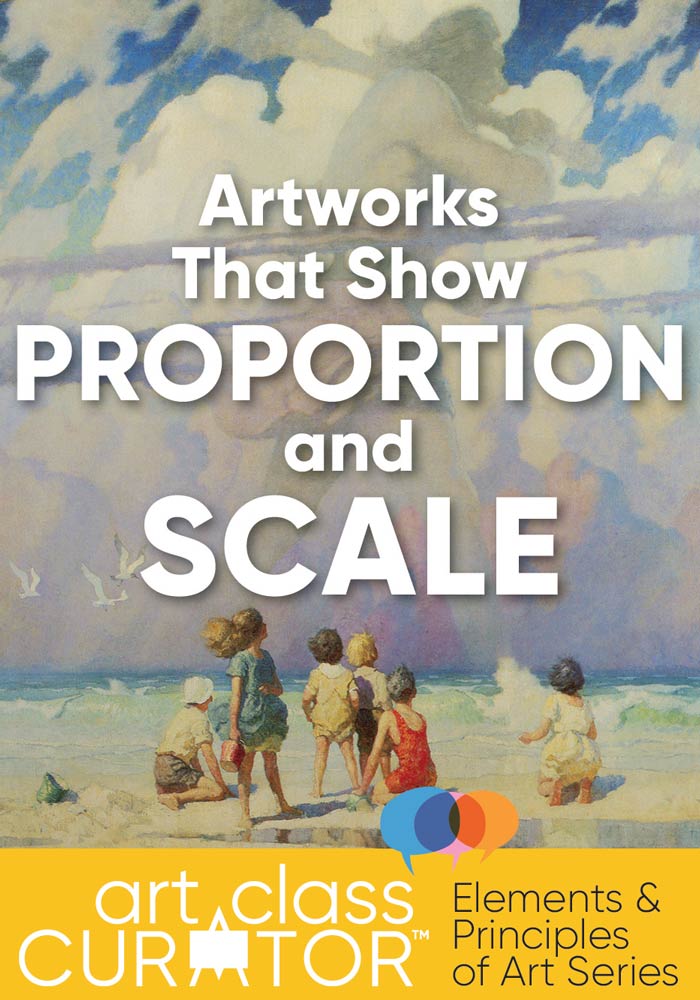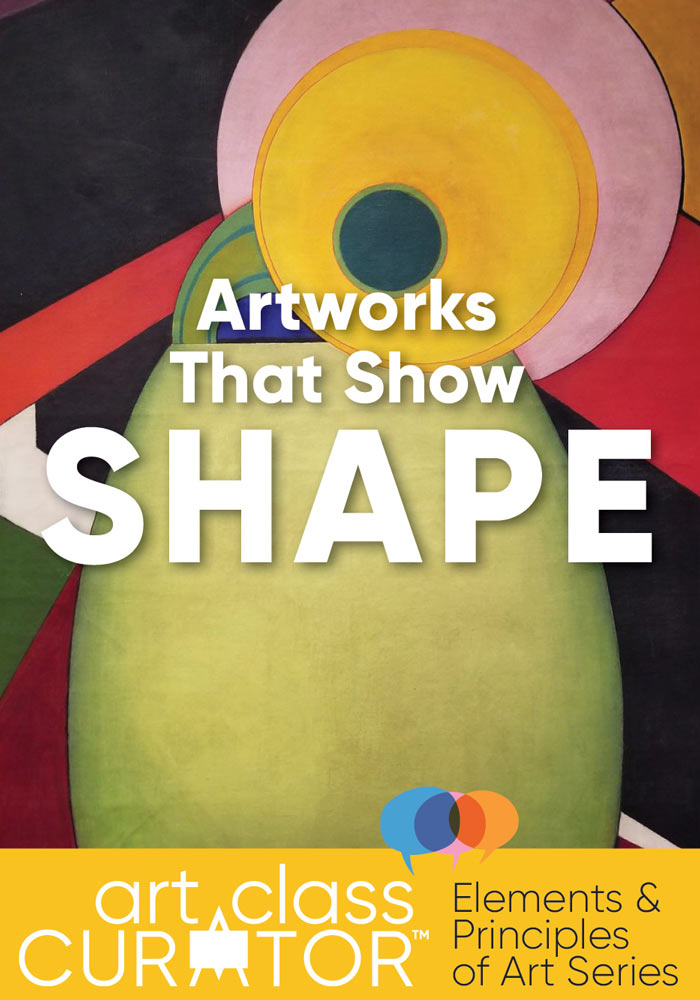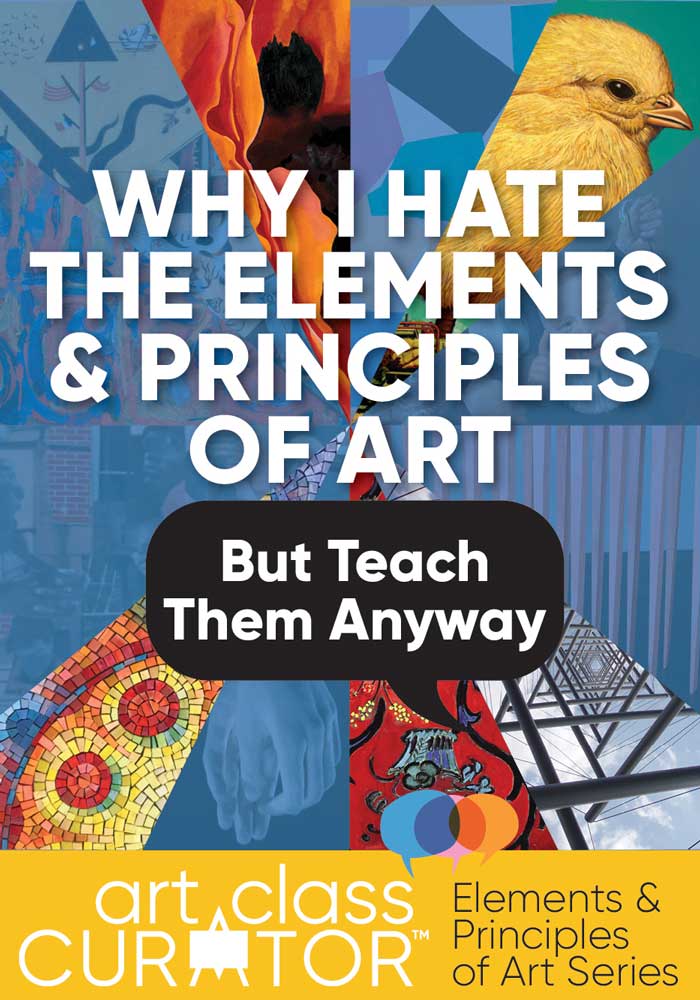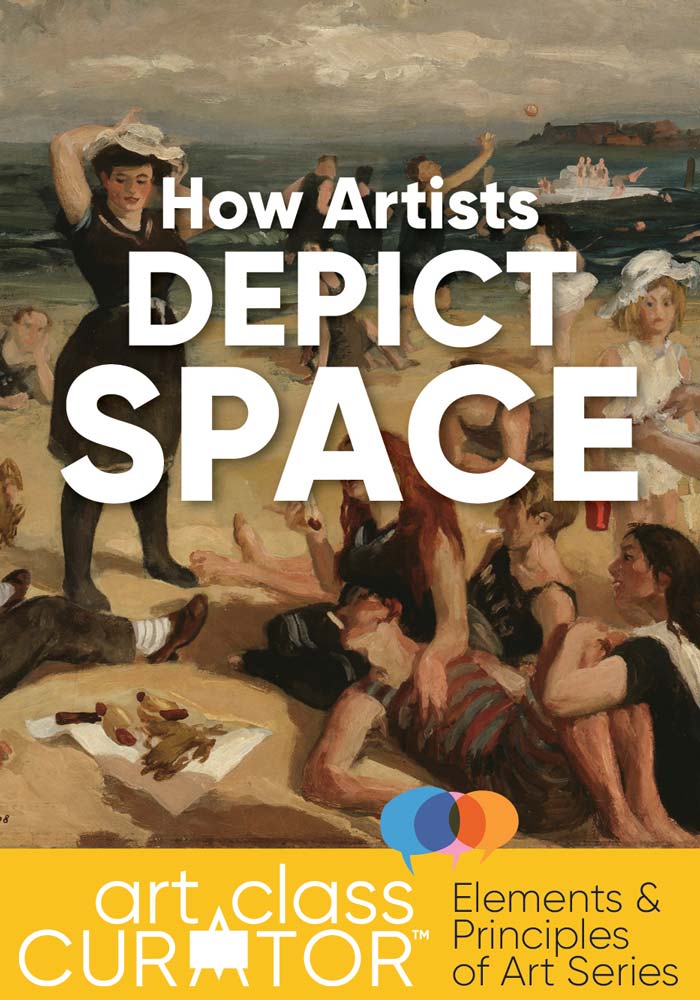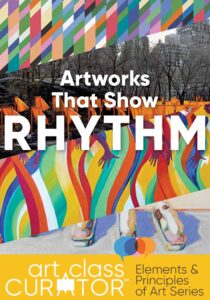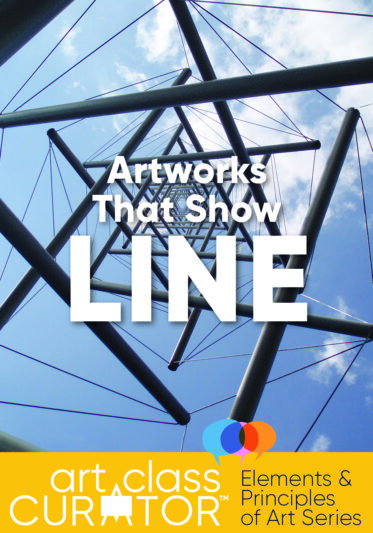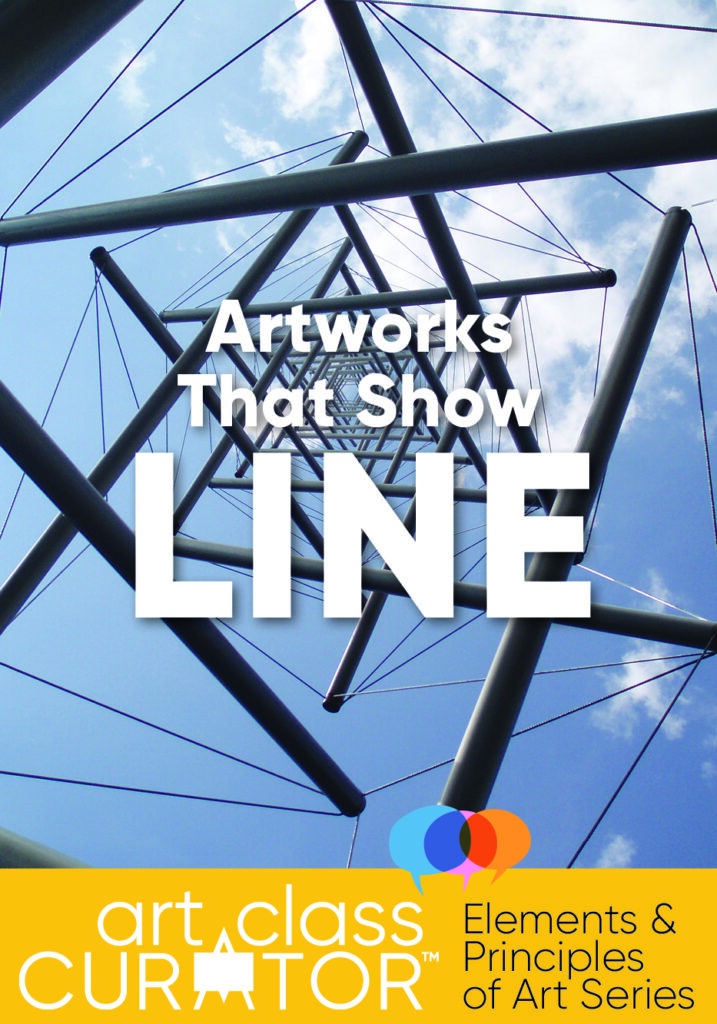Inside: These five artworks for kids are perfect to share in any classroom or age group. Each one includes discussion questions to get the conversation started!

Here are 5 artworks for kids that are, in my experience, fun to discuss with all ages. I have given guiding questions below with each work, and you can also see my “How to Talk to your Kids about Art” post as well with tips for starting and maintaining art discussions with your children.
1. Marc Chagall, I and the Village, 1911
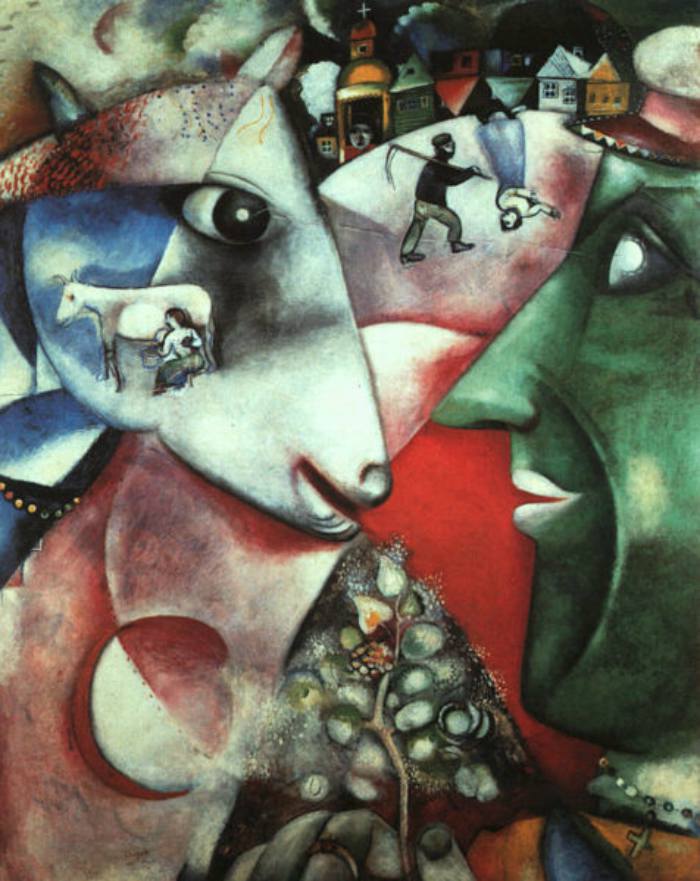
I can’t get enough of this painting and the work of Marc Chagall. His bold colors, sweet love, and whimsical touches always put a smile on my face. Give your kids a chance to explore this painting. Ask them what they think is going on. Let them take the lead in figuring it out. Your role is to facilitate their unraveling of the painting through asking questions and connecting their ideas together.
2. Shiva Nataraja as Lord of the Dance, Indian, ca. 950-1000
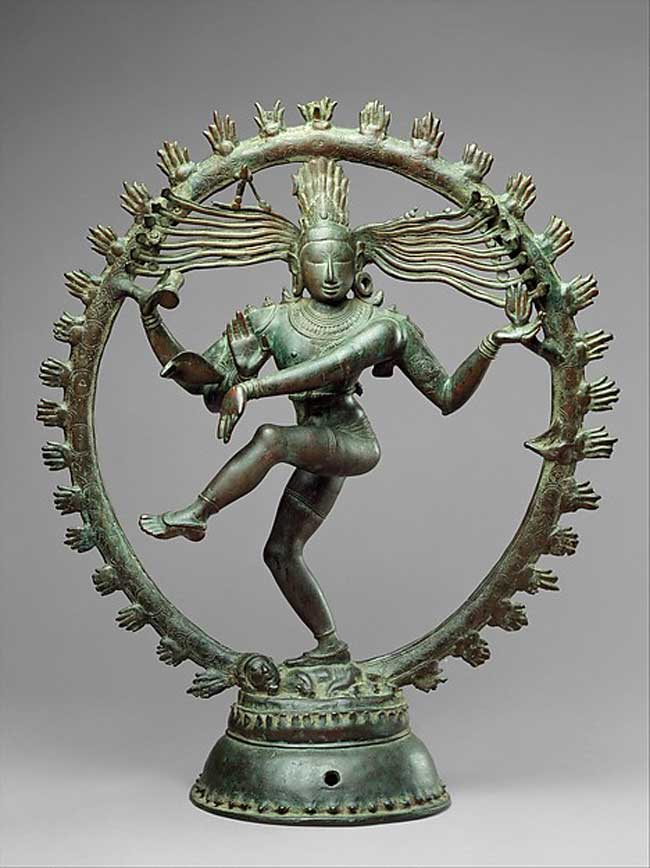
This sculpture depicts the Hindu god Shiva who is the destroyer and recreator of the universe. His dance destroys the universe and prepares for its recreation. This sculpture is rich with symbolism. His hand signals (or mudras) stand for different ideals in the Hindu religion. He dances upon Apasmaru who is a demon and a symbol of ignorance and temptation. Keep what you know secret about the art until after your kids have had a chance to share their own ideas about what they see.
3. Jonathan Borofsky, Walking to the Sky, 2004

More Pictures here.
Although I am in love with this artwork, I was hesitant to add it to today’s list, because the internet can’t fully capture how amazing this is in person. This sculpture has 10 realistic and life-size people (from a business man to a young girl) walking on the stainless steel pole that goes 100 feet into the sky. The artist says it was inspired by a story from his dad about a friendly giant in the sky who would help you with your goals for the future.
4. Grant Wood, Parson Weems’ Fable, 1939
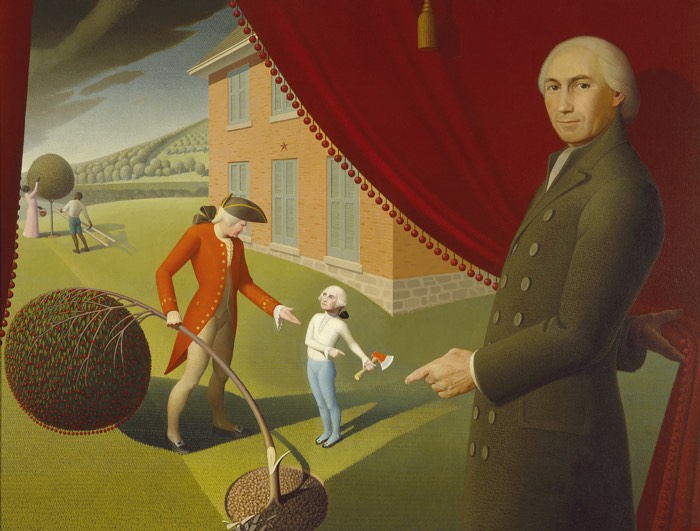
Years ago, I was employed as a Gallery Teacher at the Amon Carter Museum, where this painting is located. I loved discussing this with my students. This painting tells the famous story of George Washington chopping down the cherry tree. Shocking to most, it turns out that the story is not true and was made up by Parson Weems, who appears in this painting as the narrator of the production. Students love the old man’s head on the kid’s body!
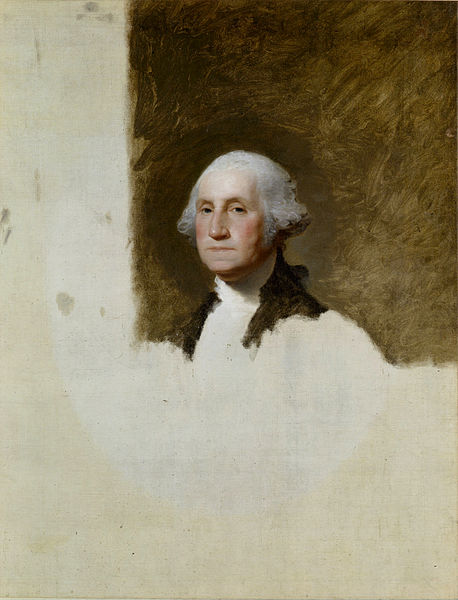
(Check out that head… it’s the same painting as the dollar bill copied from the famous Gilbert Stuart painting pictured right). The repetition of shapes and the directional lines pointing to the action of the story give you a chance to easily visually analyze the composition of the work.
5. Akbar and the Elephant Hawai
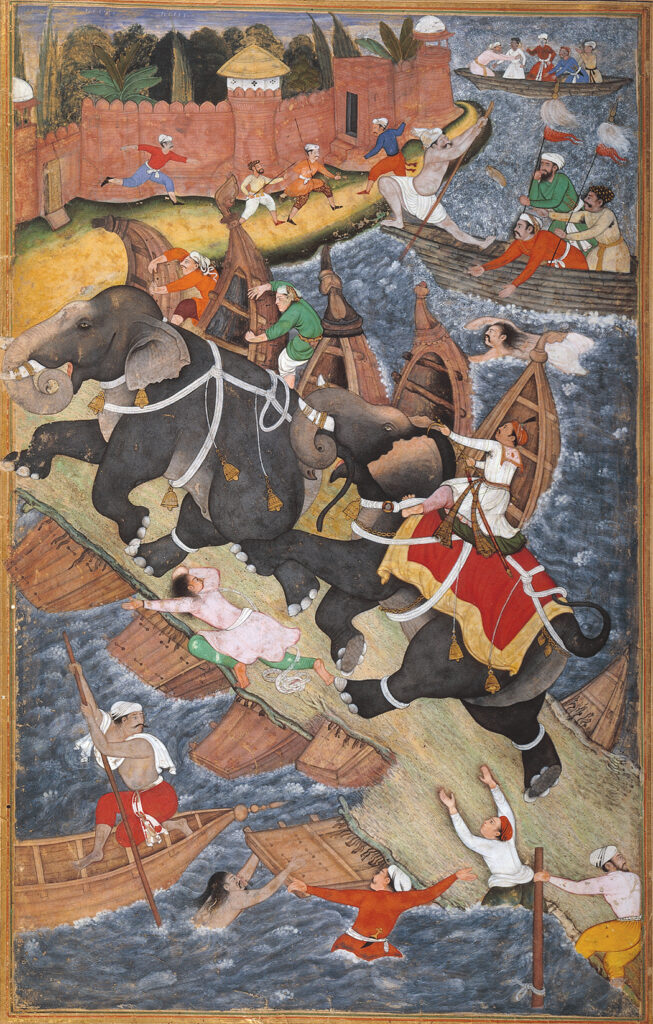
In my opinion, Indian narrative miniature painting is some of the coolest art out there. Indian artists had a masterful way of putting the horizon line way up at the top of the picture so you could see lots of space and elements to the story at once. Mix that with bold colors, energetic diagonals, and intricate patterns, and you’ve got a perfect artwork to show the littles. In this story, the ruler Akbar took control of one wild elephant (Hawai) and attacked another wild elephant. During the battle, he chased the elephant to a pontoon bridge and collapsed it. In the end, Hawai was tamed and the other animal was defeated. Akbar celebrated this story “as an allegory of his ability to govern — this is, to take charge of an unruly state” (Kleiner and Mamiya 752).
This post was originally posted on April 1, 2014.

